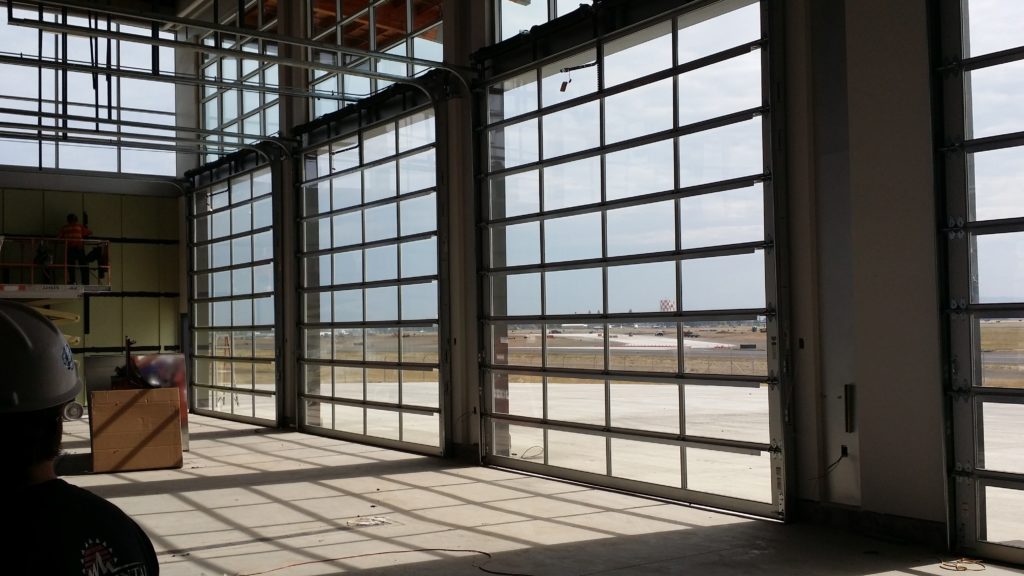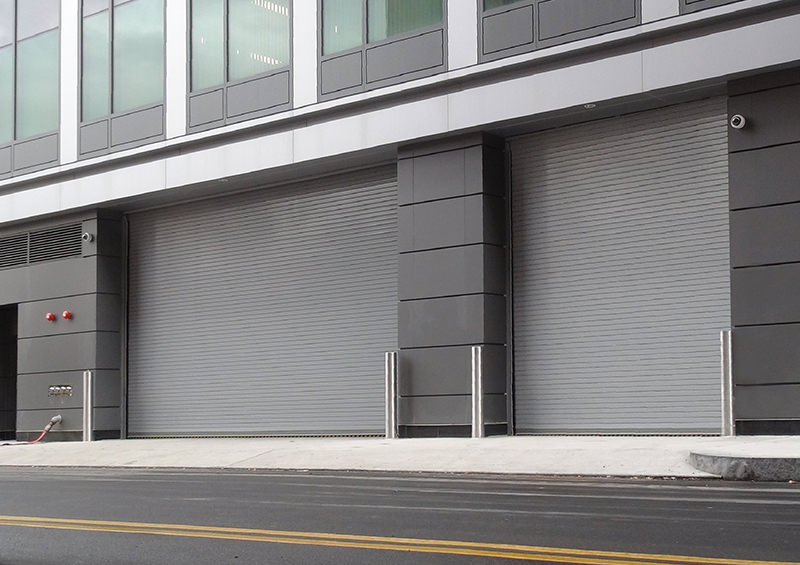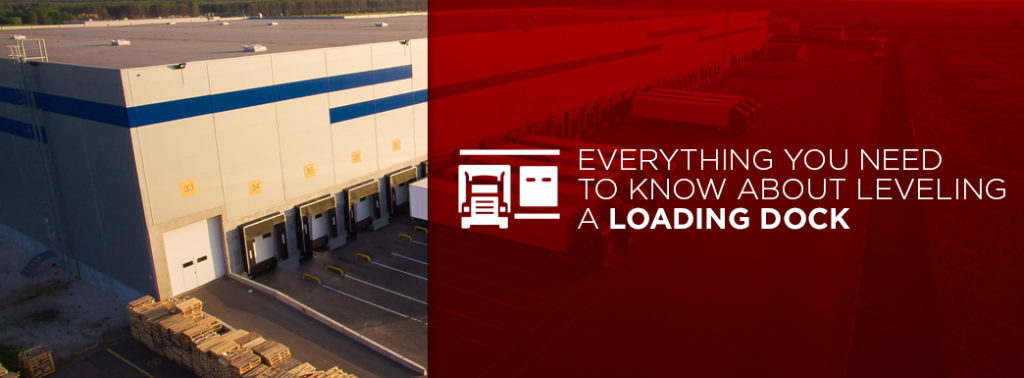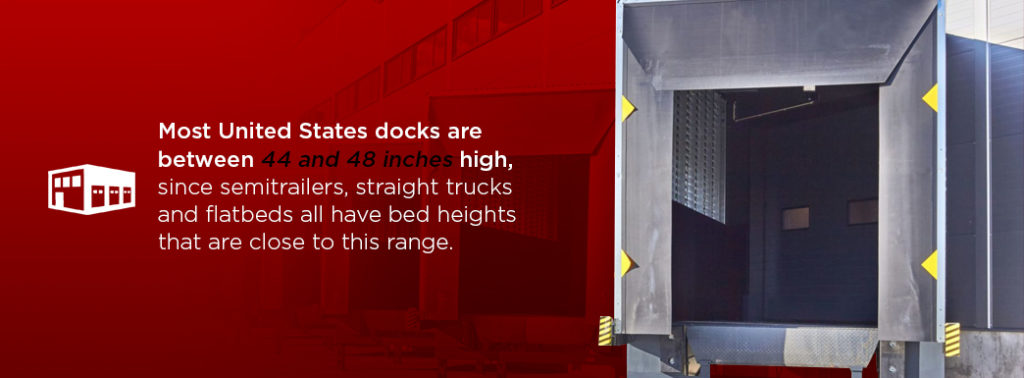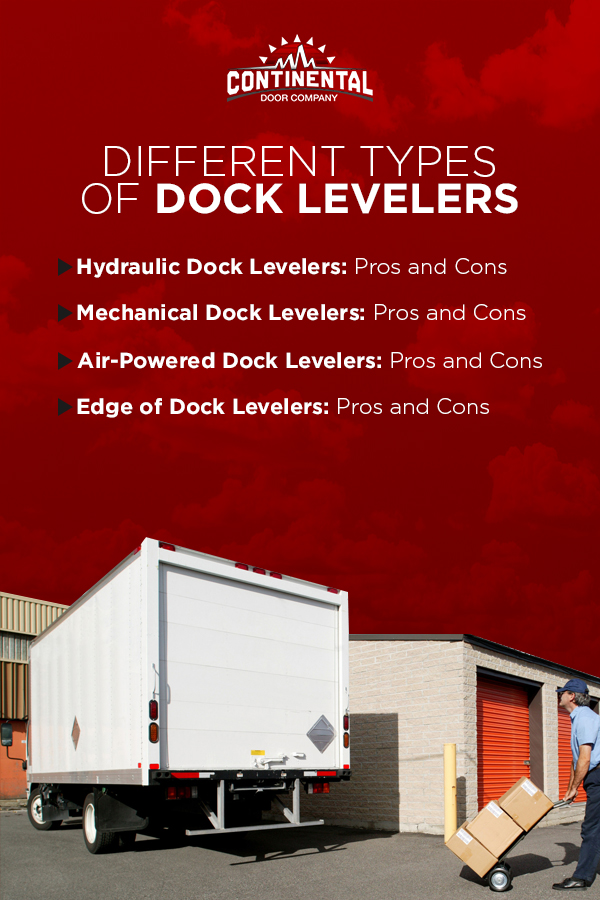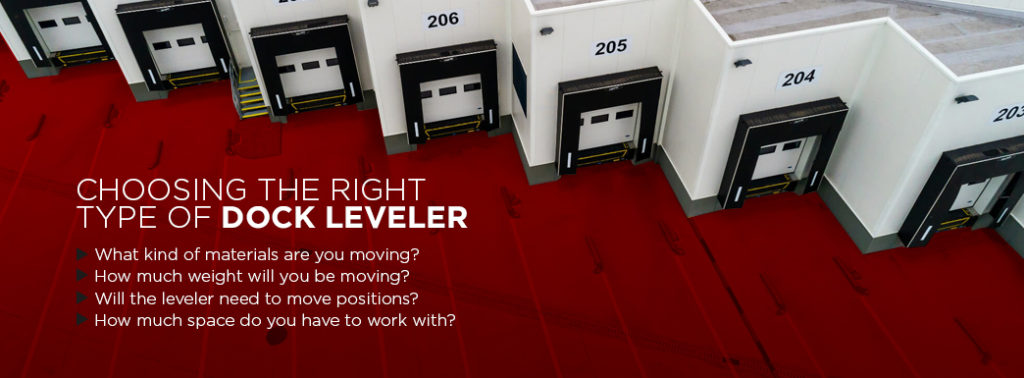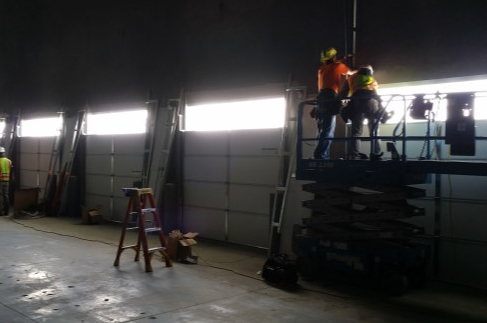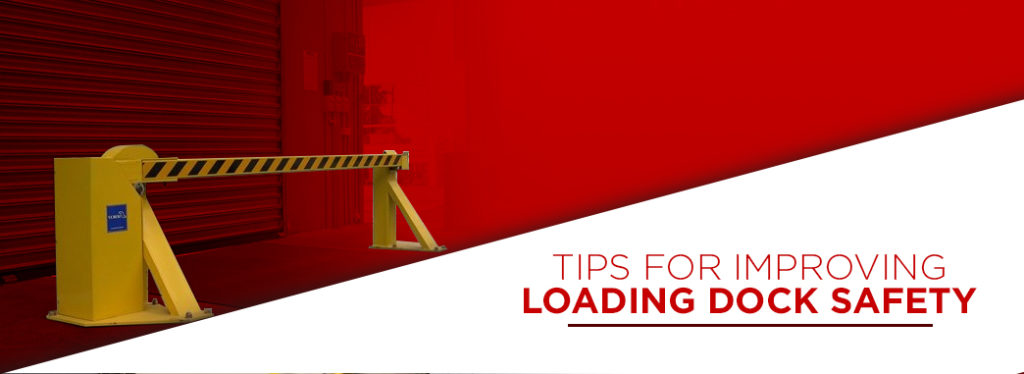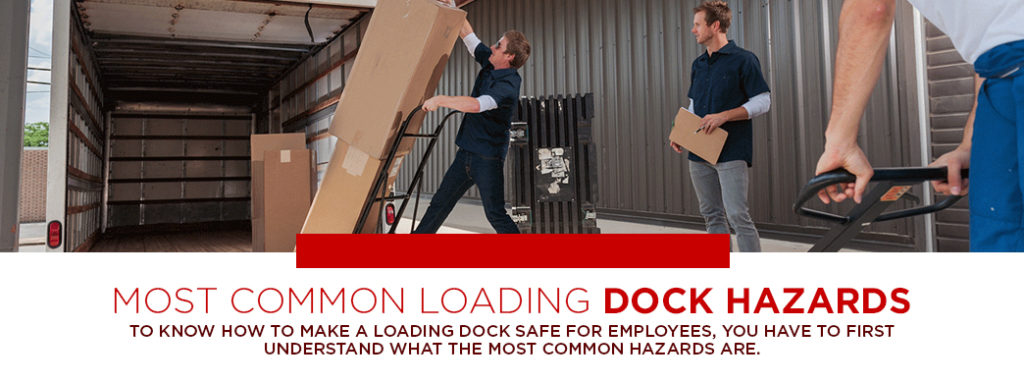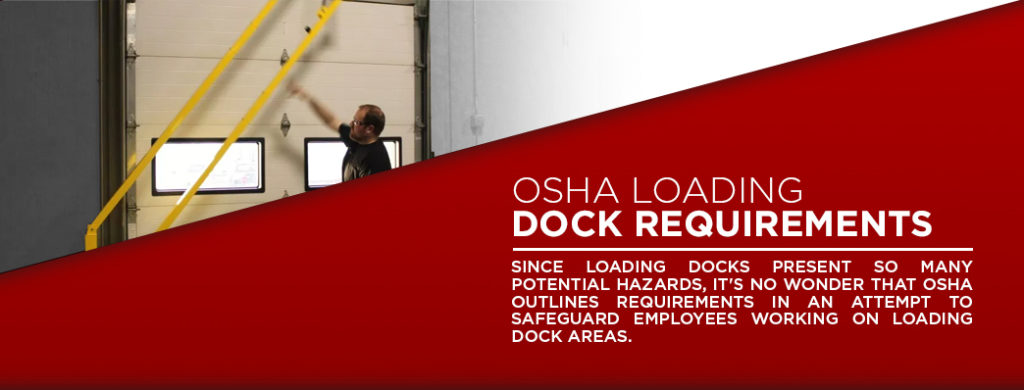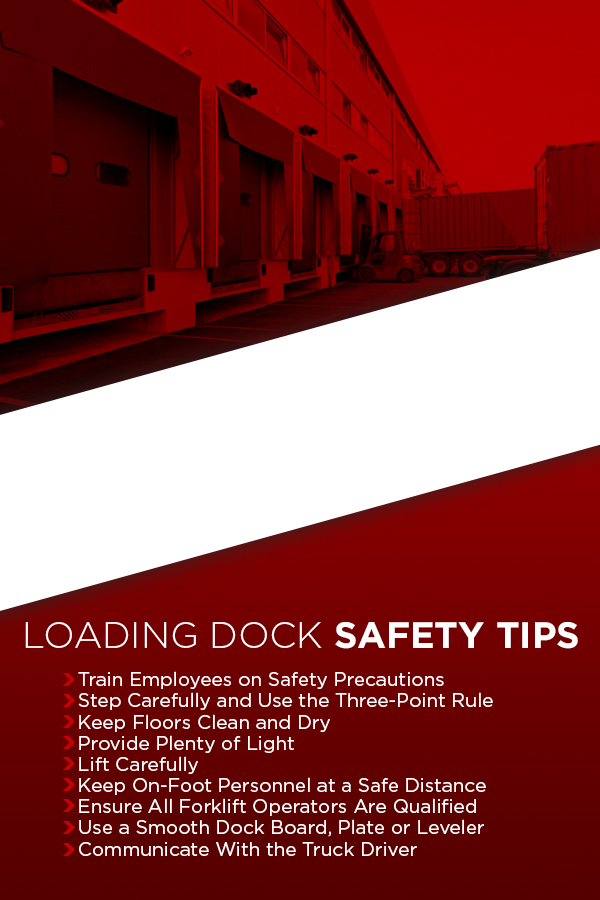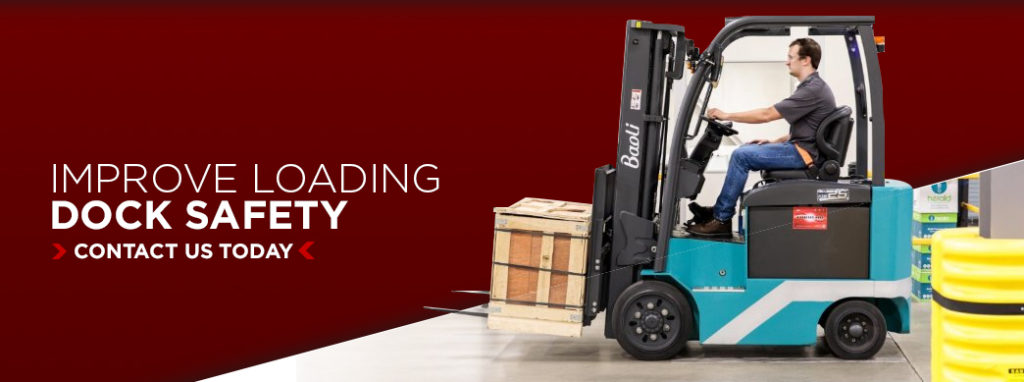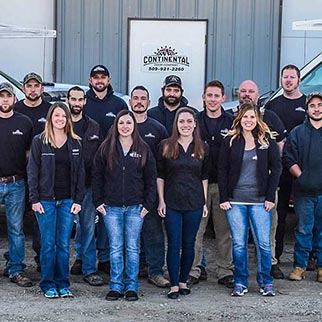Your Guide to Operable Walls for Your Garage
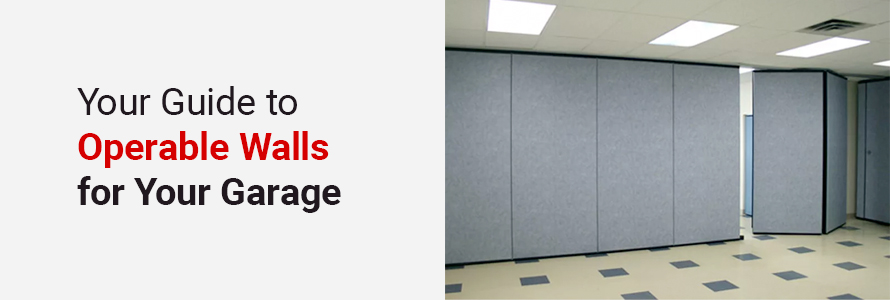
Have you ever looked at your garage and wondered how many amazing things you could do with all that extra space? Operable wall systems could be the ideal upgrade you’ve been looking for. You can build a temporary room in your garage using operable walls.
Operable walls are comprised of panels and act as the perfect room divider. Operable walls are unique among partition wall types. They’re practical, attractive and adaptable. Read on for everything you need to know about operable wall partitions.
What Is an Operable Wall?
An operable wall is a type of room divider preferred for easy assembly, sustainability and noise management. A system of individual panels makes up an operable wall. The panels can be used separately from one another but form an uninterrupted barrier when joined together. Operable walls are sturdy and provide permanent or temporary home additions.
Operable walls are easy to operate and maneuverable. There’s no need for a floor track, as the panels are often installed from the ceiling, but there’s the option for floor tracks if needed. Most operable wall systems have seals on the panels, so they provide an uninterrupted barrier once you’ve locked them into place.
How Can You Use an Operable Wall in Your Garage?
Operable walls allow you to make better use of the space in your garage. A garage partition wall can present many possibilities for using that extra space. You can build a temporary room in your garage and use it as an office, bedroom, recreational space or gym. The options are endless.
Installing operable wall partitions takes the permanence out of making an upgrade to your garage. Instead of calling in a crew of contractors and building a wall, you have a temporary option that will last as long as you need it. Operable wall systems give you extra room in your home, so let your imagination run wild.
What’s the Difference Between an Operable Wall and a Partition?
Both operable walls and partitions provide an opportunity to utilize your garage space better, but there are some differences between the two. Operable walls allow you greater flexibility in using your area, as you can keep an operable wall open or closed as you wish. Folding partitions are great if you’re looking for something less movable.
Types of Operable Walls

Operable walls come in several finishes, including metal, wood, veneer, glass and recycled materials. To find the best option for you, consider how much sound protection you’ll need for your garage, whether you’ll change the layout often or if want the light to pass through.
- Wood: For a more natural finish, operable wooden walls are a good choice. They add a rustic element to the overall aesthetics. When closed, they help with noise cancellation and provide room occupants privacy.
- Glass: Glass options allow natural light through and offer a crisp look with various opportunities to augment the glass and add finishes, including aluminum and wood.
- Metal: Consider metal options such as steel for added security, noise control and durability. Metal provides users with more permanence and can be decorated in many color combinations.
Things to Consider When Choosing an Operable Wall For Your Garage
You know you want to create a new room in your garage and have an idea of the different partition wall types available. Now, how do you choose? To get some more clarity, consider the following:
- Understand your budget: It helps to have an idea of what you’re willing to spend before you start. Some options will cost more than others, so you’ll want to clearly outline what you can afford.
- Think about how often you’ll want to move things around: If you plan on changing your space often, you should look at easy reconfiguring options. A once-off installation for a more specific purpose can be heavier and more permanent.
- Focus on sustainability: Operable wall systems are considered environmentally friendly, but if sustainability is especially important to you, consider those made from recycled materials.
- Consider the surface that fits best: Depending on what you plan to do with your space, certain surfaces of the room divider will work best.
- Remember the technology: You may need to run cabling through the wall system, depending on where the plug points are in your home.
- Consider privacy needs: How much privacy will you require in your space? Would opaque glass or recycled material do the trick? On the other hand, privacy might not be an issue at all.
- Achieve your aesthetic: When upgrading your garage space, you want it to look as goo as it functions. Choose the wall options that look best with your home’s design so your aesthetic flows throughout your house.
- Anticipate noise: The amount of glazing you choose depends on the amount of noise you want to avoid. Single-glazed doors are lighter, but they let more noise in. Double glazing gives you more options and cancels out some sound.
- Think about storage: When you want to remove your operable door system, consider how easy it’ll be to store the walls and where you’d keep them.
Benefits of Having an Operable Wall in Your Garage
Whatever you’d like to use the new room for, having a demountable partition wall system will improve your space. Aside from having a brand new room to use in whatever way you please, some of the other benefits of having an operable wall in your garage include the following:
- Practicality: There’s no need to make significant structural changes to enjoy a new space in your garage. Operable wall partitions are easy to move around. You can create a unique space in less time with less hassle and open it up as needed.
- Visual appeal: You can turn your garage into a space with spectacular interior design. No one will recognize your garage by the time you’re finished.
- Space management: Operable walls allow you to manage your space more effectively. Wasted space is a thing of the past, as you can partition the room and put every inch of your garage to good use.
- Cost-efficiency: You can add a new room to your garage without having to undergo construction, which can be costly.
- Adaptability: You can change things around as you need to with operable walls. If you don’t want to use the space as an office anymore, you might want to open it up for some indoor gardening, for example.
- Privacy: More than a simple room divider, operable garage walls can lower the noise level inside, making it perfect for a home office or other quiet area. You can also choose options that don’t allow anyone to look in while you’re busy.
How Do You Install an Operable Wall?
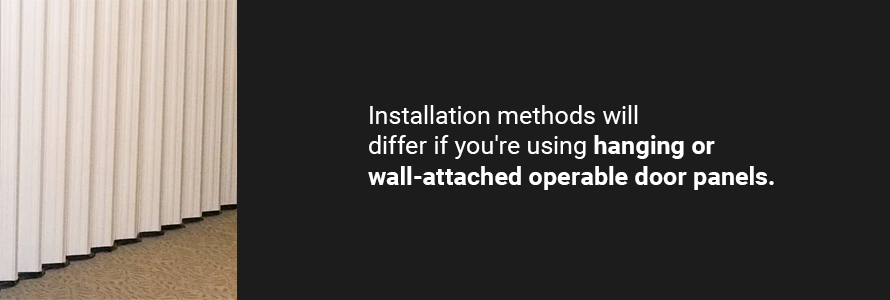
Installing an operable wall system is straightforward. The panels attach with simple attachment joints. Once you’ve lined the panels up correctly, the joints should clip into one another with ease. Then, you must connect the panels to something to complete the installation, which is most often the wall.
Installation methods will differ if you’re using hanging or wall-attached operable door panels. If you’d like to install hanging doors, you must drill the railing into the ceiling, then attach the doors. Should you be working on a wall-attached unit, take a look at these step-by-step instructions:
- Identify the wall mount side.
- Attach the top wall bracket.
- Install the bottom wall bracket.
- Lift the first panel into position.
- Attach the first panel to both wall brackets.
- Attach the rest of the panels, aside from the last one, to each other accordingly.
- Position the end panel perpendicularly.
- Attach the end panel.
- Open and close the wall.
How Do You Open and Close an Operable Wall?
Operable partitions are designed to open and close. Before opening or closing any panels, ensure the area is clear of any equipment that could damage the panels. When you’re not using your operable wall panels, you can store them in a stack or cupboard. Starting from there, move your panels into position using the following steps:
- Pull the first panel toward you.
- Move one panel at a time.
- Ensure all panels are straight.
- Set all the seals correctly.
- Reverse the process to close.
How Do You Uninstall an Operable Wall?
One of the best things about demountable partition wall systems is they can be temporary if needed. Uninstalling them is a simple process. Ensure you’ve removed all electrical cables and other hazards before you start. Follow these step-by-step instructions:
- Remove the trim.
- Score the seams if working with drywall.
- Unscrew the attachments.
- Remove the panels.
- Remove the wall mounts.
- Remove the anchor panel.
- Store the wall.
How Do You Maintain an Operable Wall?
Like any other structure, your operable wall system needs maintenance. Keeping it well-maintained gives it a longer life span, improves acoustic performance and keeps everything safe around the room. The best way to keep your wall system operating is to schedule professionals to perform routine maintenance on the system.
Some general guidelines for operable wall maintenance are as follows:
- Check the track system: Every six months, ensure the track system is level and the joints are aligned. Check for wear and tear, as you may need to replace them. Clean the inside flange of the track with a simple cleaner.
- Inspect the carriers: You may need to make adjustments every six months. Make sure the jamb or lock nut is still screwed in tight and the carriers are adjusted to the correct height.
- Go over the panels: Check your panels once a year for smoothness, working seals and damage to the trim or panel material. Clean all the rubber and vinyl parts with standard household cleaning products and some warm water.
- Clean all surfaces: At least every six months, clean all the surfaces and attachments and remove any dust or buildup. Use standard household cleaning products as needed.
If you’re uncertain about anything maintenance-related, consult a professional to ensure the longevity of your system.
Signs Your Operable Wall Needs Attention
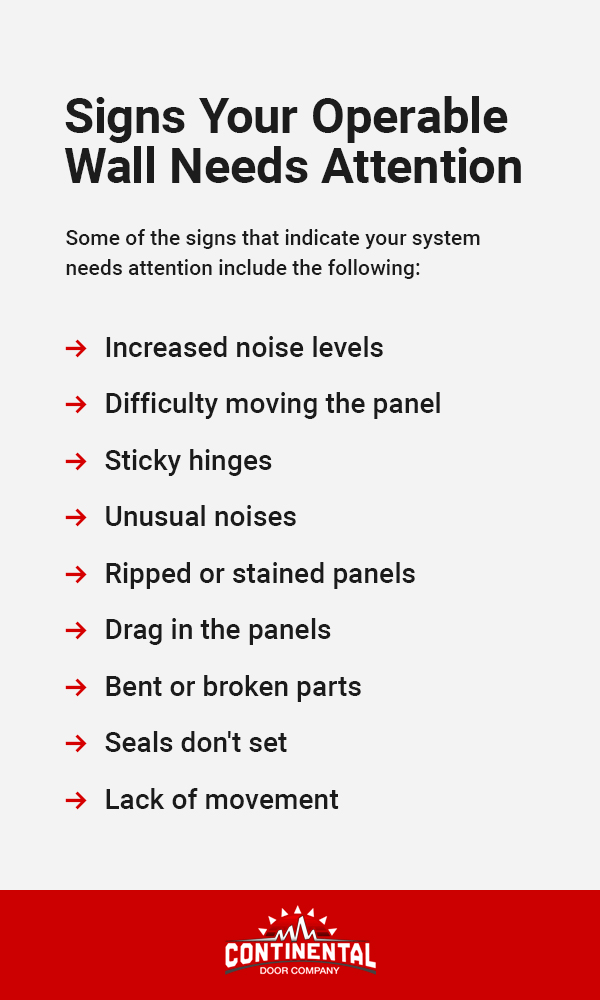
Taking immediate action as soon as you see signs of wear and tear on your operable wall system can increase its longevity and effectiveness. Some of the signs that indicate your system needs attention include the following:
- Increased noise levels: If you notice more noise is making its way through the seals, they may need replacing. Check that all the panels are straight and everything is in place. If everything looks good and noise is still coming through, call a professional to come and inspect your seals.
- Difficulty moving the panel: Panels should move effortlessly along the tracks. If things get sticky and the track is clear, you may need to replace some parts.
- Sticky hinges: If you need to shake things around to open a partition, the hinges may be bent or broken.
- Unusual noises: A strange scraping or grating noise when you move the panels along the track is a sign there could be a problem. Check the track for debris. If there isn’t any, your wall needs attention. Try not to move the panels until a professional has checked them.
- Ripped or stained panels: Dirty panels may still operate perfectly, but they do detract from the aesthetic and should be replaced.
- Drag in the panels: There could be something wrong with the ceiling track if the panels are dragging when you try and move them.
- Bent or broken parts: If parts are visibly damaged, they can cause issues in your whole system. It’s best to replace them as soon as possible.
- Seals don’t set: If they’re no longer set, they could require replacements. Check that the panels are straight and try the seal a couple of times. If they’re still not set, call a professional.
- Lack of movement: Address panels that aren’t moving along the track as soon as possible. There are several reasons this could be happening. Don’t force the panel along the track — have a professional check it instead.
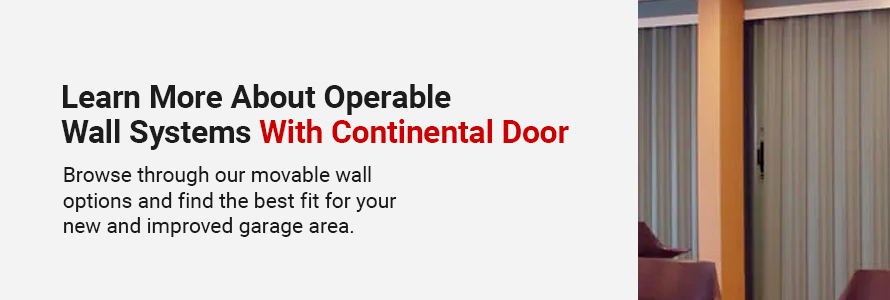
Learn More About Operable Wall Systems With Continental Door
If you’re in the greater Spokane area and interested in installing an operable wall in your garage, let Continental Door guide you through the process. You can trust our expertise — we’ve been at the forefront of commercial and residential garage door services for over 15 years and carry quality brands such as Clopay, Linear and LiftMaster, to name a few.
Browse through our movable wall options and find the best fit for your new and improved garage area. Feel free to contact us to learn more about what Continental Door can do for you.
How the 3 Types of Commercial Garage Door Openers Operate
You need to ensure your commercial property is in constant working order. If your garage doors are manual or operate with outdated openers, it’s time for a change. Continental Door offers three different types of commercial garage door openers that work for a range of businesses and their daily needs:
1. Jackshaft Commercial Garage Door Operators
LiftMaster has designed the wall-mounted jackshaft commercial door opener for businesses. This wall-mounted device can lift and lower your commercial garage doors by turning torsion springs. These operators are especially good for vertical, high-lift sectional doors and rolling shutters or grilles. They are also suitable for commercial properties in which the offices are directly above the garages. The vibration from the garage causes little disturbance.
Jackshaft commercial garage door openers are an excellent choice for commercial properties that cannot install items on the ceiling. You’ll appreciate a jackshaft opener if you have rolling steel doors.
2. Trolley Commercial Garage Door Operators
Trolley commercial door operators are installed on the ceiling — ensure you have ceiling space before choosing this garage door opener. These devices reach up to 25 cycles per hour and 80 to 90 cycles a day. They are available in single- and three-phase configurations. The best models have a voltage that can handle the type of work done on a commercial property. If you are purchasing this operator for a larger door, ensure you get a model that comes with the standard break.
The trolley is best for sectional doors with a standard lift track. For larger garage doors or high-traffic models, choose a trolley operator with 1/2, 3/4 or 1 horsepower.
3. Hoist Commercial Garage Door Operators
The hoist operator is installed on the wall for sizeable sectional garage doors with a vertical or high lift. If your doors are grilles or rolling models, you can still use this operator, but the system will be installed at the front of the hood. Either way, the system connects to the door jackshaft to power the door indirectly. In addition to the different installation locations, this system comes with a hoist chain — useful in power outages and emergencies.
These doors are an excellent choice for industrial, high-cycle purposes. They are capable of 25 cycles per hour and 90 cycles per day.
How to Choose an Opener for Your Commercial Door
You want an industrial garage door opener you can count on throughout the workday. To pick the correct operator, make sure you have noted the information about your commercial property. Choosing a commercial garage door opener depends on a series of business factors, including:
- Door size: The door length and width determines the voltage you need in an operator.
- Frequency of use: For high-traffic areas, you’ll want a strong operator such as the commercial hoist model or a three-phase trolley opener.
- Security: All LiftMaster openers come with Security 2.0, which helps protect your facility when you’re away.
- Automation: LiftMaster technologies like timer-to-close will close the garage doors after a predetermined amount of time.
Contact Continental Door Today!
Need a new commercial garage door opener and live in the greater Spokane area? Contact Continental Door. We offer LiftMaster and Linear garage door openers. We make you our priority. Our 24-hour emergency services allow us to be there for you when you need it.
Contact us today or request a free quote online!
How to Measure Your Bay Doors
Measuring Bay Doors
For businesses that operate out of a warehouse, bay doors simplify the processes of loading and unloading. But even with regular maintenance, bay doors need to be replaced from time to time. Taking careful measurements of the door opening is the first step in the process to install a new warehouse bay door.
Why Measure a Bay Door for a Warehouse?
There are a few different reasons one might measure the bay doors of a warehouse, though the most common reason is the installation of a new garage door.
You probably already have an idea of typical loading dock dimensions, even if it’s your first time installing a warehouse bay door. But bay doors are a significant investment, so you should be sure that you have the correct measurements before taking any further steps.
How to Measure for Bay Doors
The process of measuring for warehouse bay doors is fairly simple. All you need is a standard tape measure. When you’re ready, follow these steps:
1. Measure the Width of the Bay Door
Width is the distance between the left and right sides of the opening of the warehouse bay door. Be sure to measure from the widest point and record the measurement in feet and inches.
2. Measure the Height of the Bay Door
Just like you did with the width, measure the height at the bay door’s highest point: from the floor to the top of the finished opening.
You should measure the height at three different points (left, right and center) to make sure that the opening isn’t sagging on either side. If it is, there could be issues with garage door installation — so any sagging should be addressed before the installation process.
3. Measure for the Vertical Track
Next, measure the width of the area next to the openings on each side of the bay door. There should be between 3 and 3 3/4 of an inch on each side to accommodate the vertical track for the new garage door.
4. Measure the Headroom
The headroom is the distance from the top of the door’s opening to the ceiling. The headroom should be at least 6 inches for fitting the garage door opener and the torsion system.
5. Measure the Backroom
The backroom is the distance from the opening to the rear of the garage.
Determining Your Ideal Bay Garage Door Size
The ideal bay garage door opening is large enough to accommodate the opening of a full-size trailer. However, the door should not be larger than necessary so as to avoid the need for more insulation.
To provide total access to the entire height and width of a full-size trailer, standard loading dock dimensions specify that the warehouse bay door should extend between 13 and 14 feet above the parking area — the full height of the trailer.
Visit Continental Door For Commercial Garage Doors
Protect your business assets from the elements by investing in an insulated garage door that’s built to last. A door that properly fits your space will help lower utility bills and make warehouse access easy, so it’s crucial to have all the measurements correct before requesting the installation.
Continental Door is your one-stop headquarters for commercial and residential garage doors in the Greater Spokane area, and we’re always happy to help customers select the right door for their space and usage requirements. Request a free estimate or schedule service today.
Request More Information About Commercial Garage Doors
How to Choose the Right Dock Leveler for Your Dock
Choosing a Loading Dock Leveler
Dock levelers are a popular piece of equipment used to provide a transitional bridge between the dock and industrial vehicles. This allows other vehicles, like forklifts, to load and unload with ease and safety. While there are several styles of dock levelers, each of which offers its own unique advantages, they all complete the same essential function.
If you’re considering incorporating a dock leveler into your equipment list, you’ll want to think through a few factors before making your decision. The information below provides a few guidelines to help choose the right dock leveler for your warehouse dock.
Kinds of Dock Levelers to Consider
There are a few commonly-used types of dock levelers, each operating with unique variations. These dock leveler styles include:
- Hydraulic: Popular for its easy use and seamless vehicle-to-dock transitions, this portable dock leveler has many advantages. It contains a hydraulic cylinder that raises and lowers the deck, controllable with a push-button device for convenient operation. They’re generally versatile and require less maintenance than other types, explaining the higher cost.
- Mechanical: The most common loading dock choice, this leveler type operates with a mechanical spring that forces or restrains the leveler. It doesn’t require power to run and is generally cheaper than the hydraulic alternative — but runs up a higher bill in overall maintenance.
- Edge of dock (EOD): With no need for an installation pit, edge of dock (EOD) levelers are easy to operate and cost less than pit dock levelers. However, because they’re installed directly into the edge of a dock, they offer little versatility and limited range.
Which One Is Best For You?
To determine the best dock leveler for your needs and warehouse space, you must identify several different factors. All dock leveler types accomplish the same end goal. However, their style of operation, convenience and storage needs can differ widely. Consider these specifications before deciding which route may best fit your needs.
Price of Dock Levelers
Examine your budget and consider how much you are able to spend on your dock leveler. Each option is priced differently, with the hydraulic dock leveler’s price tag being the largest and the end of dock leveler generally the most affordable. This range of price tags has obvious reasons — including the levels of versatility, safety and efficiency, for example — but is certainly one to weigh before purchasing.
Dock Leveler Maintenance Cost
The initial cost of purchasing and setting up your dock leveler is just one number to consider. Like any piece of machinery, your dock leveler will likely need maintenance over time to ensure it continues working at maximum capacity. Neglecting its maintenance may lead to costly repairs or replacements down the road.
Hydraulic levelers, for example, typically cost more upfront but require less maintenance over time thanks to their design. Mechanical systems cost less, but they generally need more preventive care and service in the long run.
Dock Leveler Functionality
Depending on the operations of your warehouse, you may be using the dock leveler daily or multiple times a day. Consider how frequently it may be used as well as its functionality and ease of operation. It should be a device that your employees can learn to use easily as part of their daily tasks without slowing productivity.
Hydraulic levelers are popular because of their simple functionality, using push-button controls to move and modify the leveler. This keeps employees from exerting significant physical effort to use a leveler. If this is not something used frequently, however, you may be interested in considering the more budget-friendly manual option.
Dock Leveler Size and Load Capacity
Consider the size and shape of your dock space, as well as the kinds of vehicles you’ll be working with. Dock spaces with only a limited amount of room might benefit from an EOD leveler, whereas larger spaces could benefit from a more versatile option. If you’ll be using the leveler to support heavy loads, ensure it can handle the weight of its cargo. Consider the size and capacity of your warehouse dock and loads before settling on a certain leveler.
Order Your Dock Leveler From Continental Door Today
It’s a lot to consider, but once you’ve thought through the details and decided which leveler will work best for your budget, capacity, dock space and operational needs, you’re ready to purchase the right dock leveler. Continental Door is here to help make it simple. We can provide you with quality dock levelers — hydraulic, manual and EOD — as well as commercial dock services and equipment to get you ready for your next big project. Contact us today for a free estimate.
How Often Should a Commercial Door Be Serviced?
Servicing a Commercial Garage Door
Your garage door is the gateway to your business. While residential garage door checkups are important too, regular servicing is essential when it comes to keeping your commercial doors running properly. As one of the most important ways to keep the ins and outs of your commercial property running securely and efficiently, it’s crucial to keep your garage doors in top shape. After all, servicing your door regularly is much more cost and time-effective than having to repair a broken one.
How often should your commercial garage doors be serviced, and when do you know it’s time for a checkup? We offer the lowdown below.
How Often Should Your Commercial Doors Be Serviced?
There are several factors that determine the frequency of commercial door checkups. Identify how your garage door stacks up on these features and you’ll gain a sense of how often yours should probably be seen and serviced.
Usage Frequency of Garage Door
Unlike residential garage doors, which may be used just a few times a day, commercial doors are often used extensively throughout the day. The more frequently you use your doors, the closer you need to keep an eye on their service dates.
Commercial doors that are only used once a day or less may require just the recommended annual checkup. Doors that see heavy traffic should receive quarterly servicing to keep them running smoothly and treat any issues before they need major repairs.
Wear & Tear on the Garage Door
If your commercial doors have received any damage, you’ll want to have them serviced to ensure there aren’t any problems that go untreated. Any cracks or dents caused by collision or forklifts can worsen over time, and may eventually cause major issues with your door. You should also keep an eye out for the inevitable wear and tear that comes along with frequent use. If your door is in a commonly-used area, aim for quarterly checkups.
Quality of the Garage Door
If you have high quality, long-lasting garage doors installed, they may require less upkeep than a door without the same caliber of design and material. If you notice your door is not operating to its utmost quality, call in a service checkup. Tell-tale signs of questionable quality may include improper alignment, an ineffective photo eye or unusual noises.
Location of the Garage Door
Is your door in a high-risk area that sees frequent use? If so, it may be more prone to dents, scratches and other damage. In this case, you’ll want to consider regular maintenance more frequently than an annual checkup. Additionally, high-risk areas may include zones that have been tampered with or faced attempted break-ins in the past. You’ll want to up your door security measures and ensure it is regularly inspected and serviced as a safety precaution.
Preventive Maintenance: How Often Do You Need It?
We recommend a thorough annual maintenance check to assess every aspect of the door and make any necessary repairs. If your commercial door is heavily used, in a high-risk area of the garage, is low-quality or has been damaged, you should consider ramping up your preventive maintenance to quarterly or twice a year. This will help to catch any issues as they arise and prevent you from having to slow your production later down the line to make major repairs.
Choose Continental Door’s Commercial Door Service
Continental Door offers around-the-clock servicing for commercial doors. We’re always a phone call away in the case of a door emergency, and provide high-quality maintenance services to keep your doors in premium condition. Request maintenance service or receive a free quote today.
Contact UsEverything You Need to Know About Leveling a Loading Dock
Loading docks are bustling centers of activity with a host of moving parts. A crucial piece in these exchange centers is loading dock levelers. Dock levelers are attached to a dock face or installed into a loading dock pit to bridge the gap between incoming vehicles and warehouses.
The importance of leveling a dock is multifaceted. Primarily, leveling allows industrial vehicles like forklifts to drive in and out of docked trucks quickly and safely — making the unloading process as efficient as possible. Dock levelers also adjust to reach up or down to different truck heights. This diversity enables the dock to service a wide range of trucks. If you’re working on a loading dock project or looking for the best way to level your docks, here are some things you should know.
Table of Contents
- Standard Dock Height in the United States
- Most Common Ways to Level a Dock
- Different Types of Dock Levelers
- Choosing the Right Type of Dock Leveler
- Importance of Quality Dock-Levelers
Standard Dock Height in the United States
Dock height plays an important role in the type of leveler you use and how safe your loading dock is. Most United States docks are between 44 and 48 inches high, since semitrailers, straight trucks and flatbeds all have bed heights that are close to this range. Some loading docks and some types of trucks, however, are outside of this height range. The beds of refrigerated trucks, for example, are typically between 50 and 60 inches tall, while city delivery trucks, high cube vans and panel trucks are typically shorter than 40 inches.
Consider the types of trucks your dock receives and find the midpoint of their bed heights. The goal for dock height is to minimize the inches between your dock and the trailers it serves. Dock levelers are great for bridging height gaps, but they work most efficiently when they are close to flat.
You’ll also need to consider whether the loading dock driveway approach will be level or have an inclined or declined ramp toward the building. Your dock driveway orientation affects trailer proximity to the dock wall in different ways:
- Level Driveway: The gap between the trailer and dock wall is the same from top to bottom.
- Inclined Driveway: The trailer is further away from the dock wall at the top and closer at the bottom.
- Declined Driveway: The trailer is closer to the dock wall at the top and further away at the bottom. If improperly configured, this type of driveway can cause dock wall collisions.
In a declined driveway approach, if your driveway slope is too steep and the dock has inadequate bumper projections, truck tops may hit the building while docking. This is a serious safety concern for both the dock structure and trailer.
To avoid trailer and dock wall collisions, ensure that the declined driveway slope and projection of the dock are such that trailer tops are always at least four inches away from building walls. Creating an even surface for forklifts to drive across will keep workers safe and allow the dock levelers to perform effectively.
Most Common Ways to Level a Dock
The most common kinds of dock levelers are designed to fit into some form of dock pit. When leveling a dock, there are three main ways to create this pit. Builders may choose to begin with a preformed pit, use a pour in pan method or utilize a pit kit. Each method has pros and cons based on your timeline, building plans and preferences.
1. Preformed Pit Method: Pros and Cons
The preformed pit method involves constructing and reinforcing pits for dock levelers in the dock building process.
Pros of a preformed pit include:
- Perfect Fit: When using a preformed pit, you know your pit will be the right size for the type of leveler you’ve selected.
- Convenient: You won’t need to adjust your dock in any way before installing the leveler. Once the pit is constructed, you can add the leveler.
Cons of a preformed pit include:
- Necessary Forethought: Not everyone has the luxury of starting with a new loading dock. The preformed pit method is suited for those in the dock-construction phase. You also have to know what type of leveler you want to install to size the pit correctly. This amount of forethought may be tricky depending on how much you know about the dock before it is set into action.
- Longer Installation: While you are all set to install the leveler right away, waiting for the pits to be constructed can take a long time.
2. Pour in Pan Method: Pros and Cons
Pour in pan installation methods come with a pan that serves a pit. The pan is welded to the dock leveler, making the installation a quick process.
Pros of a pour in pan pit include:
- Reduced Installation Time: Installing a pour in pan leveler is as simple as placing and centering the leveler and pouring concrete around the outside to secure it. This process is simple and ideal for docks installing multiple levelers at once.
- No Preformed Pits: Because pour in pan levelers function as their own pits, you don’t need precisely measured pits. This versatility eases the installation process.
Cons of a pour in pan pit include:
- Required Preparation: For pour in pan levelers, you still need to ensure there is a notch cut in the foundation wall to give the leveler a place to sit. In addition, you need a concrete slab for each leveler to sit on.
3. Three-Sided Pit Kit Method: Pros and Cons
Three-sided pit kit levelers come with pre-made steel panels that are fastened together on-site.
Pros of a three-sided pit kit include:
- Perfect Size: Because these pits are assembled on-site, you are guaranteed to have the right-sized pit for your leveler.
- Reduced Cost: Using a pit kit costs less than traditional wood forms.
Cons of a three-sided pit kit include:
- Minimal Customization: Because these kits are pre-fabricated, it may be difficult to customize other features of your dock.
Different Types of Dock Levelers
Once you’ve established a dock pit, you can begin selecting a type of dock leveler. There are several dock leveler varieties, and each provides certain advantages depending on your situation. In general, dock levelers are operated with electrically-powered push-buttons or with spring-loaded mechanics. Push-button models tend to be easier to operate and are more ergonomic — however, they may not be the best choice if your dock doesn’t have nearby electrical outlets.
Here is a breakdown of each leveler type and its pros and cons:
1. Hydraulic Dock Levelers: Pros and Cons
Hydraulic dock levelers get their name from the hydraulic cylinder that raises and lowers the deck and operates the lip.
Pros of a hydraulic dock leveler include:
- Versatility: A hydraulic dock leveler comes in a variety of configurations and has several power options.
- Economic: These types of levelers tend to have lower service and maintenance costs overall.
- Push Button: Hydraulic levelers are push-button enabled, making them safe and easy to operate.
Cons of a hydraulic dock leveler include:
- Initial Cost: Hydraulic dock levelers are usually more expensive than other types.
- Electricity: This dock leveler requires a power source nearby and will contribute to your overall electric bill.
2. Mechanical Dock Levelers: Pros and Cons
Mechanical dock levelers tend to be the most common choice for loading docks. Mechanical spring systems force the leveler upward or restrain the leveler depending on its position.
Pros of a mechanical dock leveler include:
- Initial Cost: Mechanical dock levelers are among the least expensive options for dock leveling.
- Powerless: Because these levelers don’t use electricity, you don’t need to worry about having a nearby power source or an increased electricity bill.
Cons of a mechanical dock leveler include:
- Expensive Upkeep: These levelers are typically the most expensive to repair and maintain long-term.
- No Push Button: Workers position mechanical dock levelers manually.
3. Air-Powered Dock Levelers: Pros and Cons
Air-power dock levelers use a pneumatic bag system to move the leveler deck.
Pros of an air-powered dock leveler include:
- Inexpensive Upkeep: When compared to mechanical dock levelers, air-powered levelers are less expensive to repair and maintain and require less overall upkeep.
- Push Button: Air-powered levelers are push-button enabled, making them safe and easy to operate
Cons of an air-powered dock leveler include:
- Initial Cost: Air-powered dock levelers are more expensive to purchase than mechanical dock levelers.
- Electricity: Some electricity is required to power the airbag system in an air-powered leveler. You’ll need a nearby power source, and these levelers will add to your electric bill.
4. Edge of Dock Levelers: Pros and Cons
Edge of dock (EOD) levelers do not always require an installation pit. As their name indicates, these levelers are installed directly into the edge of a loading dock.
Pros of an EOD leveler include:
- Initial Cost: EOD levelers cost significantly less than pit dock levelers
- No Pit Required: If your loading dock doesn’t have any pits, you can install an EOD that doesn’t require a pit.
- Push Button: EOD levelers are push-button enabled, making them safe and easy to operate
Cons of an EOD leveler include:
- Electricity: EOD’s use hydraulic or pneumatic power, which means you’ll need an electricity source nearby, and you’ll pay for them on your electric bill.
- Limited Range: An EOD has a limited vertical operation range, which means it may not be safe to use them unless the vehicles you typically service are close to the loading dock height.
Choosing the Right Type of Dock Leveler
With so many options available, how can you know what type of dock leveler is best for you? The most significant influence over your leveler choice will be your specific loading dock situation. In some scenarios, “cons” listed for each leveler may actually be “pros.” Understanding how your dock functions will give you a clear idea of what to look for in a dock leveler.
Here are some details to consider:
What kind of materials are you moving?
Materials transported through the dock will make an impact on the type of equipment traveling over your leveler. Light materials may be transported manually, meaning the dock leveler will only have to support human weight plus material weight. Heavier materials may be transported by forklift. This means your leveler will need to be strong enough to safely support the specific forklifts driving over them in addition to the material weight.
How much weight will you be moving?
Your materials and transportation method will determine the amount of weight traveling over your dock leveler. According to industry group MHI, over 90% of dock levelers have a weight capacity range of 25,000 to 80,000 pounds. In any case, you’ll want a dock leveler that caters to the heaviest materials and equipment you’ll be transporting. Once a dock leveler is installed, you can’t add weight capacity to it. Be sure to give yourself enough capacity to account for the potential of heavier equipment or materials in the future.
Will the leveler need to move positions?
If your dock services a wide range of vehicle heights, you’ll need a leveler that can reach up or down to them. In this scenario, an EOD leveler may not provide the necessary range, and you may want to opt for a pit leveler. If your dock leveler consistently needs to be positioned at an incline or decline, you might need to pick a leveler with more capacity. The greater the degree of incline in your leveler, the greater the impact your equipment will have on it. If your dock experiences a variety of vehicle heights, you’ll want to pick a leveler with the versatility to service them all safely.
How much space do you have to work with?
The loading dock’s space availability may impact your dock leveler selection. Preexisting docks with limited space may want to pick a space-efficient EOD leveler. Docks with more space may enjoy the versatility of a pit leveler. Make sure you match your space requirements with your weight and function requirements when making a selection. If you’re a contractor designing or building a loading dock, be sure to give ample space for the type of dock levelers your clients need.
Other considerations:
Price of dock levelers
Examine your budget and consider how much you are able to spend on your dock leveler. Each option is priced differently, with the hydraulic dock leveler’s price tag being the largest and the end of dock leveler generally the most affordable. This range of price tags has obvious reasons — including the levels of versatility, safety and efficiency, for example — but is certainly one to weigh before purchasing.
Dock leveler maintenance cost
The initial cost of purchasing and setting up your dock leveler is just one number to consider. Like any piece of machinery, your dock leveler will likely need maintenance over time to ensure it continues working at maximum capacity. Neglecting its maintenance may lead to costly repairs or replacements down the road.
Hydraulic levelers, for example, typically cost more upfront but require less maintenance over time thanks to their design. Mechanical systems cost less, but they generally need more preventive care and service in the long run.
Importance of Quality Dock-Levelers
Use the answers to these questions to help narrow your leveler selection. To ensure proper loading dock leveler safety, navigate the selection process with long-term consequences in mind. Though the initial cost of certain leveler types may prompt you to consider a less expensive option, loading dock safety should be a top priority.
In line with industry trends and best practices, many companies are choosing safe, long-lasting dock equipment rather than low-cost equipment. Certain high-cost levelers require less overall maintenance, making them a quality investment. Don’t let cost drive your leveler selection. Instead, focus on finding a safe, functional option with the longevity to serve your facility well.
Dock Leveling Equipment You Can Trust
Leveling a loading dock is a serious task. When you’re shopping for dock levelers, you want a high-quality solution that fits your needs. At Continental Door, we’re committed to finding those solutions with our excellent products and outstanding customer service. Shop our selection of loading dock essentials for safe, effective equipment that maximizes your dock’s productivity.
Contact us today to learn more about our loading dock equipment or to request a free estimate for your project!
Contact UsRequest More Information About Dock Leveling Equipment
Related Posts
Tips for Improving Loading Dock Safety Everything You Need to Know About Automated Security Gates Keeping Your Employees Safe from Your Commercial Garage Door What Should You Be Looking for in a Commercial Garage Door?
3 Signs You Need to Replace Your Dock Leveler
Signs it’s Time to Replace Your Loading Dock Leveler
When your business operates out of a loading dock, you know just how important it is to perform regular loading dock maintenance. Doing so is an investment in safety for your most valuable asset — your personnel.
But how do you know when it is time for dock leveler repair or replacement?
What Is a Dock Leveler Used For?
Levelers are used in buildings with truck-level doors. In terms of safety, a dock leveler is one of the most essential parts of a loading dock.
A dock leveler is a height-adjustable platform generally made from a large metal plate. The dock leveler bridges the gap between the loading dock and the truck. It can be raised or lowered depending on the height of the truck’s bed.
While a dock leveler is a sturdy piece of equipment, it can be worn down over time when subject to heavy forklift traffic. Dock leveler repair can help, but replacement is necessary from time to time.
Reasons for Dock Leveler Replacement
The following signs indicate that it may be time to replace a dock leveler:
1. The Components are Warped
The weight and stress of constant forklift traffic can warp elements of a dock leveler over time. If the dock leveler is visibly warped, repairs will probably not be effective — it is most likely time for a replacement.
2. You Want to Upgrade the Door or Bay
There may be a number of reasons to upgrade the door or bay of a loading dock. Maybe the components are damaged or outdated, resulting in a decrease in efficiency. If this is the case, the dock leveler is one of the parts of a loading dock that should probably be replaced.
3. The Leveler Is Outdated, Unsafe or Fails to Meet Leveler Requirements
A dock leveler can be outdated or unsafe for numerous reasons. Even with regular loading dock maintenance and dock leveler repair, this device can wear down over time like any other equipment. An unsafe dock leveler can result in damage to forklifts and cargo as well as serious injuries to personnel. Replacement of an unsafe dock leveler protects your business’s most valuable assets.
When to Upgrade a Dock Leveler
The reasons for dock leveler repair and replacement come down to two main factors: safety and efficiency. Ideally, you’ll upgrade the dock leveler before any safety concerns arise.
Monitoring efficiency can be a useful way to determine when it is time for an upgrade. When a dock leveler is outdated or unsafe, operators require more hands-on time with equipment to ensure safety. Over time, this results in more downtime and a decrease in production.
If you notice that production is gradually getting lower, it may be time to upgrade the dock leveler.
How Often Should a Dock Leveler Be Serviced?
The type of leveler used in your loading dock can impact the amount of service it requires. Some designs just aren’t built to last as long as others.
Mechanical levelers generally last five to seven years, while hydraulic levelers might last 10 years.
Yearly service is the best way to ensure that a dock leveler is in proper working order.
Contact Continental Door Today
The leveler is one of the most essential parts of a loading dock, so dock leveler repairs and replacements are important investments in the future of your business’s operations. If your leveler is warped, worn or part of an outdated bay, trust Continental Door to perform the expert repair or replacement you need to keep your business moving.
Contact Continental Door for high-quality and professional services and expertise. We are proud to serve homeowners and businesses in the Greater Spokane area. Request an estimate or service today.
What Should You Be Looking for in a Commercial Garage Door?
What Should You Be Looking for in a Commercial Garage Door?
When it comes to residential garage doors, you probably have a pretty good idea of what you should be looking for. For commercial garage doors, however, it can be a different story. There are some areas where it’s okay to cut corners on a residential door that aren’t necessarily good ideas to skimp on when it comes to commercial doors, and vice versa. What are some of the things you should be looking for when shopping for a commercial garage door? Here are four of them.
Material
You want your commercial garage door to be made of metal, usually steel or aluminum. Natural wood can be great for a residential garage door, as it can create a very aesthetically pleasing look and feel. With a commercial door, though, you want to be a little more practical. Wood doors are vulnerable to cracking and splintering, not to mention rot if exposed to the elements or too much moisture. They require much more maintenance and care, which can be worth it in a residential environment but not something you want to be worrying about when it comes to a commercial enterprise.
Insulation
When it comes to residential doors, you’ll often have a choice between an insulated and a non-insulated door. You may feel that for your home, the energy savings is not worth the extra expense of insulation. While this is debatable, you should never skimp on insulation for your commercial door. You have valuable inventory to protect from the elements. Additionally, insulation will also make the door quieter and often more durable thanks to the added insulation material inside the door.
Heavy-Duty Torsion Springs
Your torsion springs are designed with a limited life. Most residential springs are built to last about 10,000 cycles, or openings and closings before they wear down or break. That’s usually fine for the average family, but your commercial garage door may be opening and closing a lot more. If that’s the case, you should look for torsion springs that can withstand up to 25,000 – 50,000 cycles. In some cases, you may have as much as hundreds of thousands of cycles, in which you may benefit from a high-speed, high-cycle door.
Windows
This one will vary from business to business, but you will want to think about whether or not you want people to be able to see into your facility and how much natural light you want to let in. If you want a lot of light and visibility, consider a full-view commercial door. Windows will also allow you to see your customers as they arrive at your facility.
For more information on commercial door features and help finding the right commercial door for your business in the greater Spokane, WA or Northern Idaho areas, contact Continental Door Co. today.
Request More Information About Commercial Garage Doors
How Do I Maintain a Commercial Garage Door?
How Do I Maintain a Commercial Garage Door?
If you run a business that involves any kind of machines, you know that anything with moving parts requires regular maintenance if it is going to continue to work properly. Commercial garage doors are no exception. If a commercial garage door fails before its time, there’s a great chance that poor maintenance was somehow involved.
If you schedule annual maintenance for your commercial garage door, that’s a great first step. But that may not be enough to make sure you minimize the chance of malfunction or a costly repair and to maximize the life of your commercial garage door. So, what are some of the ways you can make sure your commercial garage door is getting the care it needs?
Check the Insulation and Weather Seals
While damage to the weather seals or insulation won’t necessarily shorten the life of your commercial garage door, it will definitely reduce its effectiveness. Any damage to the weather seals or insulation means your door is not properly insulated and protected against the elements. This means your inventory or whatever is on the other side of your door is vulnerable to water damage or temperature damage, not to mention that you are probably losing money on energy bills due to the extra heating or cooling required. It’s a simple matter to do a once over every couple of weeks to make sure the weather seals and insulation are still firmly in place.
Pay Attention to the Door’s Behavior
Is the door opening and closing smoothly? Is it making more noise than it used to? Train yourself and your workers to listen to what your commercial garage door is telling you. If your door appears to be struggling to do its job in any way, there’s a good chance that a broken spring, worn-out roller, frayed cable or the like is the culprit. Your door may be continuing to work, but the added stress could add up to a big repair soon.
Lubricate Everything You Can
Machines break down because parts wear out, and most of the time, parts wear out because of friction. That’s why it’s so important to regularly lubricate all the moving parts you can reach on a regular basis. It doesn’t take long, and it can save you a lot of problems with your door.
Check All Safety Devices Regularly
Commercial doors can be very big, heavy and dangerous. Most maintenance should be done by a professional to ensure everything is completed properly and safely. A professional garage door service technician can also set you up on a preventative maintenance schedule to catch any problems before they become nightmares.
If you’re in the Spokane, WA or Northern Idaho areas and you spot an issue that may need addressing, or if it’s time for your annual maintenance checkup, just contact the experts at Continental Door Company, and we’ll be right over to help.
Schedule Commercial Garage Door Maintenance
Tips for Improving Loading Dock Safety
A loading dock, also sometimes called a loading bay, is the area of a commercial or industrial facility where goods are loaded onto or unloaded from a vehicle, often a semi-truck. Loading docks are typically attached to a storage room, staging area or freight elevator. Though all loading docks serve the same purpose, they don’t all look the same. The most common type of loading dock is an opening that is flush with the building’s exterior. A truck can back all the way up to the opening, and freight can be loaded and unloaded without exposure to the elements.
One thing all loading docks have in common is that, while they’re essential to loading and unloading operations, they can be one of the most dangerous areas of the facility for warehouse workers. Loading docks are home to approximately a quarter of all reported warehouse injuries. The good news is that the majority of accidents that take place on a loading dock are preventable. With the right safety equipment and protocols, your business can make loading docks a safer place to get the job done.
Table of Contents
- Most Common Loading Dock Hazards
- OSHA Loading Dock Requirements
- Loading Dock Safety Tips
- Improve Loading Dock Safety
Most Common Loading Dock Hazards
To know how to make a loading dock safe for employees, you have to first understand what the most common hazards are. The Occupational Safety & Health Administration (OSHA) highlights two major hazards. Since a loading dock is elevated to meet the height of a semitrailer, falling off the edge of the dock is one serious risk. The other is skidding or slipping when the surface of the dock becomes slick from rain or ice.
These are both major risks, but they aren’t the only potential perils of loading docks. Here are several other dangers to be aware of:
- Trailer Separation: This problem is common enough that it goes by several nicknames: trailer walk, dock walk and — most commonly — trailer creep. The weight of forklifts entering and exiting the trailer can cause it to gradually drift away from the dock until there is a dangerous gap between the trailer and the dock.
- Premature Departure: If a miscommunication occurs and a truck driver mistakenly pulls away from the dock prematurely, it could cause a forklift driver entering, exiting or inside of the trailer to be injured.
- Landing Gear Collapse: Damaged or weak landing gear on a trailer can suddenly fail, allowing the trailer to move. It could either pitch forward or swing off to one side. This can injure employees who are entering, exiting or inside of the trailer.
- Trailer Pop-Up and Up-Ending: Pop-up can occur when the weight of a loaded forklift entering the back end of the trailer causes the trailer to press down in the back and pop up in the front. Up-ending is the opposite, but equally dangerous, problem, where the trailer’s nose is forced down, causing the back to rise.
- Dock Shock: Dock shock refers to the health and safety hazard that lift truck operators experience when they are jarred by a bumpy transition crossing over from the warehouse floor to the loading dock.
- Unsecured Loads: When a load on a forklift or other powered truck isn’t properly secured, it can slide off, causing injury to the forklift driver or any other employees within close proximity.
- Lifting: Though not unique to loading docks, lifting equipment is also a common source of warehouse injuries and often occurs when employees are loading and unloading goods at the loading dock. Though a back strain may seem less serious than a fall or other injury, a first-time back injury can cost $10,000 and can put an employee out of commission for some time.
OSHA Loading Dock Requirements
Since loading docks present so many potential hazards, it’s no wonder that OSHA outlines requirements in an attempt to safeguard employees working on loading dock areas. Depending on your industry, the types of equipment you use and specific hazards related to your operations, there will be many OSHA standards you should pay attention to. Let’s look briefly at three different standards that are relevant to any loading dock. Note that OSHA standards are a federal baseline. Your state may have its own more stringent requirements to pay attention to.
Guard Rails
When your dock door is open, a worker could potentially fall from the platform. OSHA standard 29 CFR 1910.23 outlines the requirement for guard rails on dock door openings when they’re open. This standard requires any wall opening that is four or more feet up from the ground to be guarded by a barrier consisting of a top rail, intermediate rail and posts. The guard rail should be about 42 inches from the floor, so it effectively stops someone from falling.
Forklifts
OSHA standard 29 CFR 1910.178 covers the use of powered industrial trucks, more commonly referred to as lift trucks or forklifts. An overturned or fallen forklift can crush people, causing serious injury or even fatalities, so there are many requirements for these vehicles. Some of the most basic requirements are that these pieces of equipment must meet the American National Standard for Powered Industrial Trucks, Part II, ANSI B56.1-1969 and must be operated only by trained workers.
Another relevant requirement for loading docks is that railroad cars or highway trucks or trailers that are being boarded by powered industrial trucks for loading and unloading purposes must have their breaks set and be secured by wheel stops or other effective protection, so they don’t move. If a semitrailer is not attached to a tractor, then it may need to be supported by fixed jacks. OSHA also requires that workers check to make sure the floor inside a trailer is in good shape before driving into it.
Personal Protective Equipment
Standard 29 CFR 1910.132 discusses the use of personal protective equipment (PPE) in the workplace. This information has fairly broad applications, including on the loading dock. The standard states that, wherever it is necessary, the proper PPE must be provided. This leaves it up to businesses to carefully determine what types of PPE their employees might need. However, based on the OSHA standard, the following are typically recommended for loading dock workers:
- Safety boots
- High-visibility clothing
- Gloves
- Hearing protection
- Eye protection
View Loading Dock Equipment Products
Loading Dock Safety Tips
Now that we’ve looked at the hazards present on a loading dock and at the relevant OSHA requirements to take into account, let’s look at 10 tips to help you adopt effective loading dock safety precautions that will keep all workers safe. Make sure you evaluate your own facility and operations to see if there are other ways you can help prevent problems with loading and unloading.
1. Train Employees on Safety Precautions
Any time you look at improving loading dock safety, you need to get any employees who work on loading and unloading or who work within the vicinity of the loading dock on board. Provide training to any new workers and periodically to experienced workers to remind them of important safety protocols such as inspecting palletized product to make sure it is secure before moving it or properly communicating with other workers to keep the loading dock safe for everyone.
2. Step Carefully and Use the Three-Point Rule
Emphasize to employees that they can help prevent falls by stepping carefully on the loading dock. Workers should never run and should be careful to remain a safe distance from the dock edges. They should never jump off the dock as this can cause trauma to the back, knees and ankles. When stepping on or off of a piece of heavy equipment, remember the three-point contact rule. This rule says that operators should keep three limbs on the vehicle when stepping in or off.
3. Keep Floors Clean and Dry
Another way to help prevent slips and falls is by keeping the floor dry and clear of any objects or debris. Containers, tools and any other materials should stay out of the way of loading and unloading operations. Schedule regular cleanings to make sure the loading dock area remains tidy. If spills occur or if rain, snow or ice leaves the floor wet, mop the floor immediately and allow it to dry.
4. Provide Plenty of Light
When an area is dark, it increases the chance that employees won’t see spills or small objects like nails that could cause an injury. It can also make it easier for collisions to occur. Make sure the dock area is well-lit and that lift trucks are equipped with spotlights so drivers can see everything in front of them, whether on the warehouse floor or in a semitrailer.
5. Lift Carefully
To prevent injuries from lifting heavy materials, make sure all employees follow best practices for lifting. This includes never lifting skids and pallets on their own and, when they are lifting materials, bending their knees with their back straight so as not to strain their back. They should also wear work gloves to help them get a firm grip on whatever they’re lifting.
6. Keep On-Foot Personnel at a Safe Distance
Because workers can be hit by heavy machinery and seriously injured or killed, workers on foot should make sure they maintain a safe distance from heavy equipment. This especially means making sure you are never in a trailer when a forklift is entering or exiting. To help enforce this precautionary measure, try marking the floor with highly-visible tape or paint to indicate where it is safe to walk.
7. Ensure All Forklift Operators Are Qualified
OSHA requires that all powered industrial truck operators are trained for a reason. If an employee is unauthorized to operate heavy machinery but thinks they can operate a forklift in a pinch, this could lead to potential injuries and lawsuits. Make sure employees you intend to operate forklifts or other heavy equipment have gone through the training they need for that particular piece of machinery, and make sure unauthorized workers understand they are never allowed to operate a forklift if they haven’t been trained to do so.
8. Use a Smooth Dock Board, Plate or Leveler
Dock boards, plates and levelers provide a connection between the loading dock and the inside of the semitrailer. Dock boards and plates provide a straight transition while dock levelers help to make up for differences in height between the loading dock floor and the trailer. Whatever you’re using to make the transition, make sure it provides a smooth path. The smoother the transition, the less chance lift truck operators have of experiencing dock shock. Make sure these transition pieces are correctly positioned and secure before anyone drives over them.
9. Communicate With the Truck Driver
Since a miscommunication with a driver could cause a serious injury, make sure the driver is aware of what’s going on at all times. Whether you use colored lights, hands signals or some other system, make sure the driver has a visual at all times that they can see in the truck mirrors. Drivers should always do their due diligence to make sure the trailer is clear before pulling away from the loading bay. Some drivers may hand their keys off to someone else who can return them once loading or unloading operations are complete.
10. Use Vehicle Restraints
Trucks should always be secured with vehicle restraints, so they aren’t able to roll away from the loading dock. Wheel chocks are a traditional way of doing this, but modernized rear impact guard (RIG) locking devices can do even more. As the name suggests, these locking devices attach to the truck’s RIG using a full rotating hook. These devices can prevent the hazardous issue of trailer separation. For added protection, look for a model that includes a communication system, so you always know when they’re engaged. Some may even issue an audible alarm when necessary.
Improve Loading Dock Safety
Loading docks may be known as notoriously dangerous areas, but they don’t have to be. A major step toward keeping your loading dock safe is committing, along with your employees, to observing safety precautions at every turn. Think of the OSHA standards only as a starting point. Follow the tips in this article and look for other ways you can make your environment safer.
Another critical step toward a safer loading dock is having the right safety equipment. The right vehicle restraints, levelers and more can make all the difference in preventing injuries and other problems.
Since 2000, Continental Door, Co. has serviced the communities in Spokane, Spokane Valley, Coeur d’Alene and the surrounding areas in Washington, Northern Idaho, Northeastern Oregon and Eastern Montana. In addition to providing and installing residential and commercial garage doors, we carry quality equipment for loading docks. We understand just how crucial the right equipment is to helping you get the job done safely day after day. Contact us today with any questions or comments or to learn more about how you can make your loading dock a safer place to work.
Request More Information About Loading Dock Equipment Products
Updated: 05/22/2019



